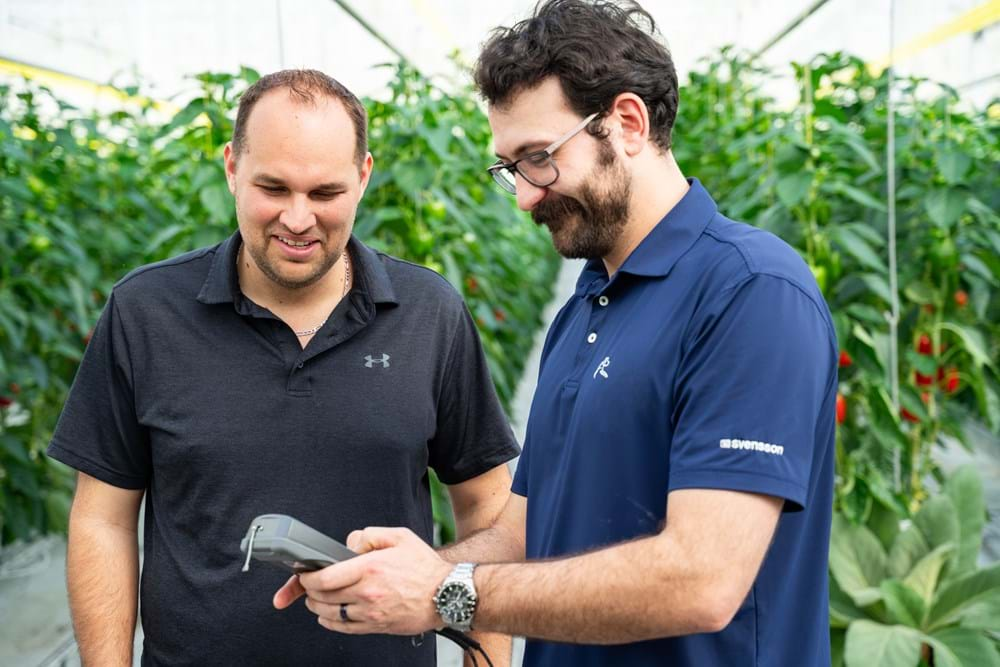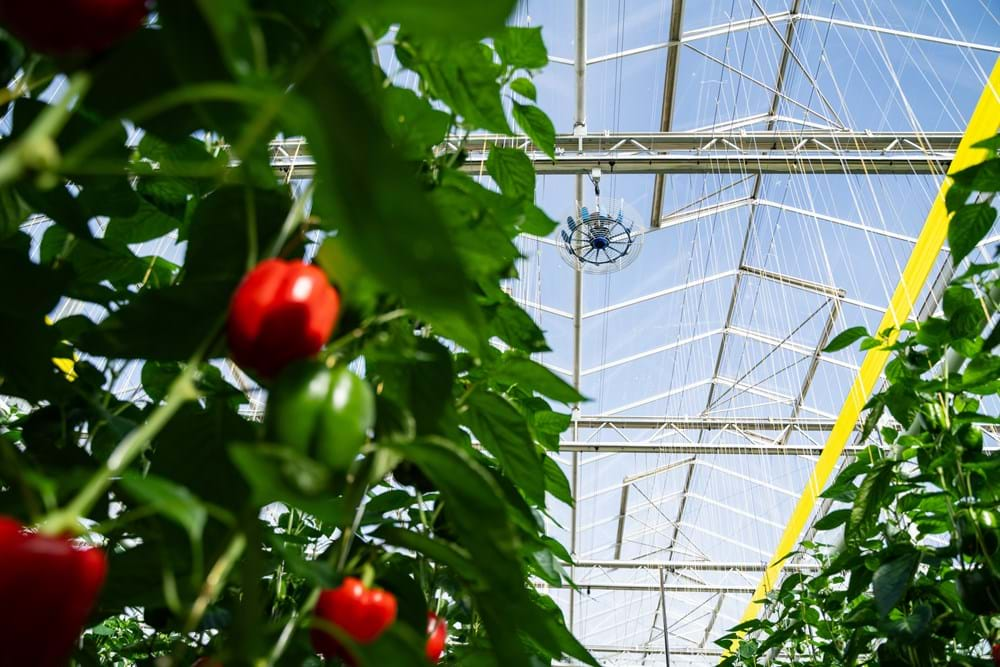When Mike Cornelissen was growing up in the Ontario farm business that his Dutch grandfather started in 1953, there were dairy cows. There was the land and there were the crops, but there was also a determination to test new things.
“It was the way we bred, and how we ran our operation,” he remembers. “We did trials, and we looked at third party data, but we always wanted to verify it ourselves.”
It turned out to be a sound start for a greenhouse business that has used Svensson solutions extensively. The company has quadrupled in size since building its first four hectares in 2016.
Today, Twin Creeks Greenhouses is a thriving 40-acre operation that relocated from the original family farm to take advantage of landfill methane supplies. It has also innovated in its choice of diffused glass roofs, Svensson energy screens and now ClimaFlow vertical ventilation.
And there is just as much experimentation going on as ever.
“Every year is a learning year. I think we have got between 25 and 30 trials again this year,” he says. “So that's just how we learn, right. We make decisions off of data and we're open to try a lot of different things and if the data proves that it makes sense, we'll do it.”

Svensson Climate Expert, Paul Arena, reviewing light measurements with grower Mike Cornelissen.
A yield bump and no negatives
It’s this test and see attitude that led to Twin Creeks testing a fleet of 70 ClimaFlow vertical fans: “I put five acres in right away, just to start a trial.”
“We wanted to get the airflow, without adding as much minimum pipe,” he says. “For one thing, using minimum pipe for humidity control and an overly-active crop during high outside temperatures is real negative,” says Cornelissen. There was a decisive impact already during the first few months: “We saw a yield bump early on, so that was nice,” he says. “But the main point of the trial was to see that there were no negative effects of the fans.”
“I could see how the climate was becoming more uniform, and that was the biggest selling point, so I pulled the trigger and decided to do the whole farm.”
Added to that, temperatures can get pretty high in the Ontario summer, so why add even more heat just to get an active climate. Twin Creeks is already seeing energy savings when they use the fans instead of the heating pipes to activate the greenhouse climate. And as a system thinker, Cornelissen sees other benefits.
“The greenhouse has always been very generative,” he says. “We had no problem getting the crop to set. It was more the other way round, we want to have a more vegetative climate”
From a single screen to double Luxous
During the first growing season with the double Luxous screens in place, outdoor temperatures in Watford, Ontario dropped to -18°C. Mike Cornelissen looks over at his screen.
“This temperature is towards the bottom end of what we designed the greenhouse for,” he says. “Previously, with the single screen, we would be running the rail pipes at 80°C and that kind of heat isn’t good for the plants, and the humidity drops down, producing a more generative crop.”
“Today, as I look now, the boiler is running at only about 75% of what we usually would do, and in general we can run our rail pipes at between 45°C and 55°C, which helps us keep the humidity a little higher to get a more vegetative crop.”
“We are definitely seeing less gas usage and I would say one of the nicest starts of the crop I've ever had thanks to the double screen,” says Cornelissen. He says the decision to move to double Luxous screens came gradually in response to a desire to go further with the yield and quality of the site. “It was partly from talking to other growers and so far I’m very happy with it."
“The goal was to create a more uniform climate,” says Cornelissen. “For one thing, we save energy, but we also had a nice yield bump. And with more acreage and a new AI growing system, it’s even more important to have a uniform crop so you can maximize yields”.

Twin Creeks leverages the power of vertical airflow and double screens to save energy and create a homogeneous climate.
Transitioning to shade and energy
The company used single layer Luxous for seven years before deciding to move to double screens throughout. And the existing setup will transition again, says Cornelissen. “We’re likely going to move to a 15% or 20% shade screen on the top layer, so we’re keeping the existing Luxous energy screen on the top layer for now.
“Dustin and Paul from Svensson are helping me with some light transmission tests of that original screen so I can change it out at the right moment.” And as the company moves ahead with new screens and new screening strategies, it has adopted Svensson’s Energy Monitor module for LetsGrow in order to identify any potential savings that may be available.
“It’s actually been pretty straightforward running the two-screen setup, but from Energy Monitor I learned I can open up the screens a little bit earlier in the morning and close them a little earlier in the evening,” he says.
Cornelissen says that when you add together these small percentage point improvements, it builds the case for expanding further in the new projects he’s planning with Svensson. Those small improvements from studying the data add up, he says: “I learned that there’s about 20 minutes where I could close the screens a little more quickly. It adds up.”